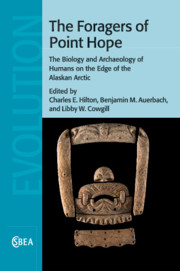
- Cited by 4
-
Cited byCrossref Citations
This Book has been cited by the following publications. This list is generated based on data provided by Crossref.
Antón, Susan C. Taboada, Hannah G. Middleton, Emily R. Rainwater, Christopher W. Taylor, Andrea B. Turner, Trudy R. Turnquist, Jean E. Weinstein, Karen J. and Williams, Scott A. 2016. Morphological variation inHomo erectusand the origins of developmental plasticity. Philosophical Transactions of the Royal Society B: Biological Sciences, Vol. 371, Issue. 1698, p. 20150236.
Sheridan, Susan Guise 2017. Bioarchaeology in the ancient Near East: Challenges and future directions for the southern Levant. American Journal of Physical Anthropology, Vol. 162, Issue. S63, p. 110.
Justice, Lauryn C. and Temple, Daniel H. 2019. Bioarchaeological Evidence for Social Maturation in the Mortuary Ritual of Ipiutak and Tigara Hunter-Gatherers: Lifespan Perspectives on the Emergence of Personhood at Point Hope, Alaska. American Antiquity, Vol. 84, Issue. 2, p. 234.
Kelly, Alexa Pennavaria Ocobock, Cara Butaric, Lauren Nicole and Maddux, Scott David 2023. Metabolic demands and sexual dimorphism in human nasal morphology: A test of the respiratory‐energetics hypothesis. American Journal of Biological Anthropology, Vol. 180, Issue. 3, p. 453.
- Publisher:
- Cambridge University Press
- Online publication date:
- August 2014
- Print publication year:
- 2014
- Online ISBN:
- 9781139136785




